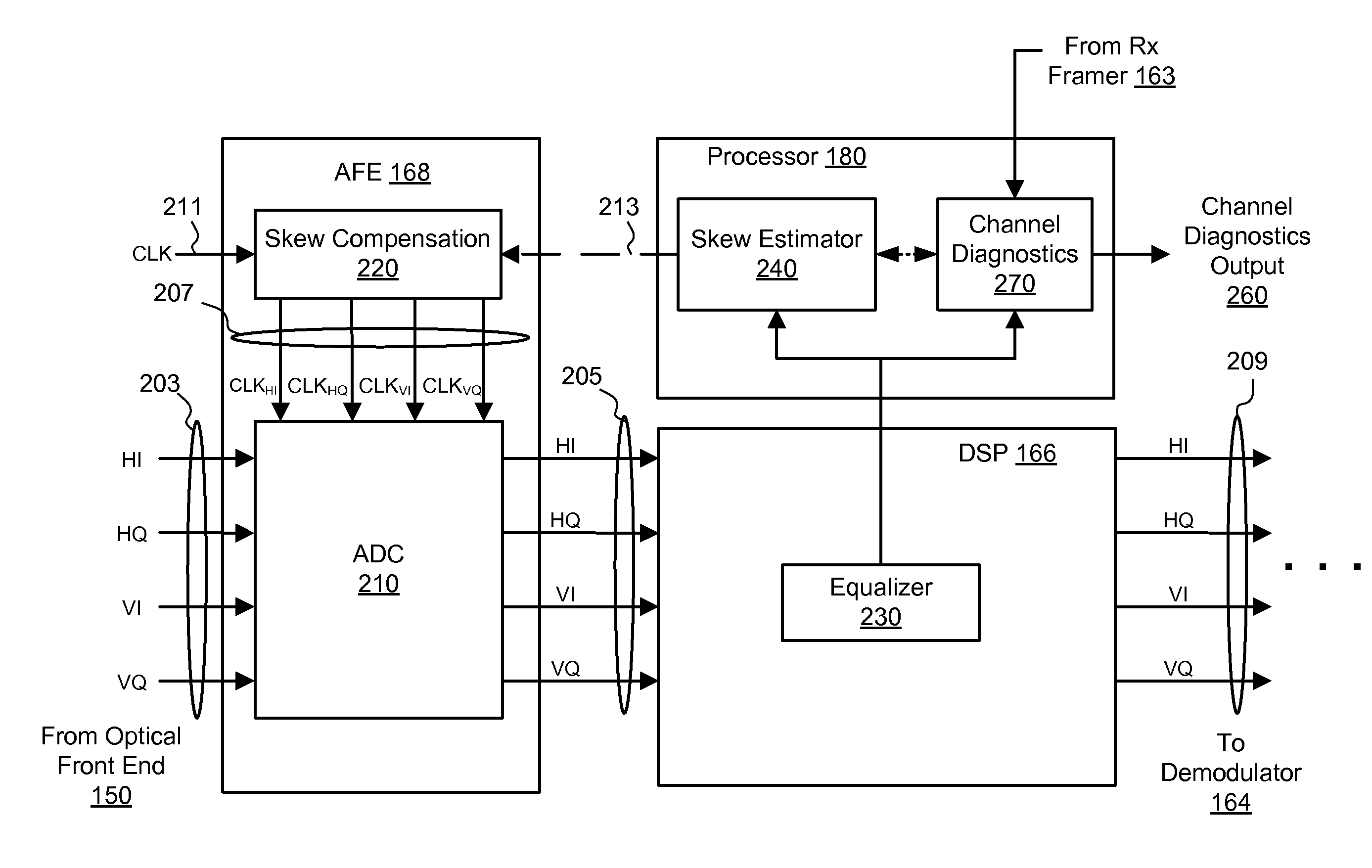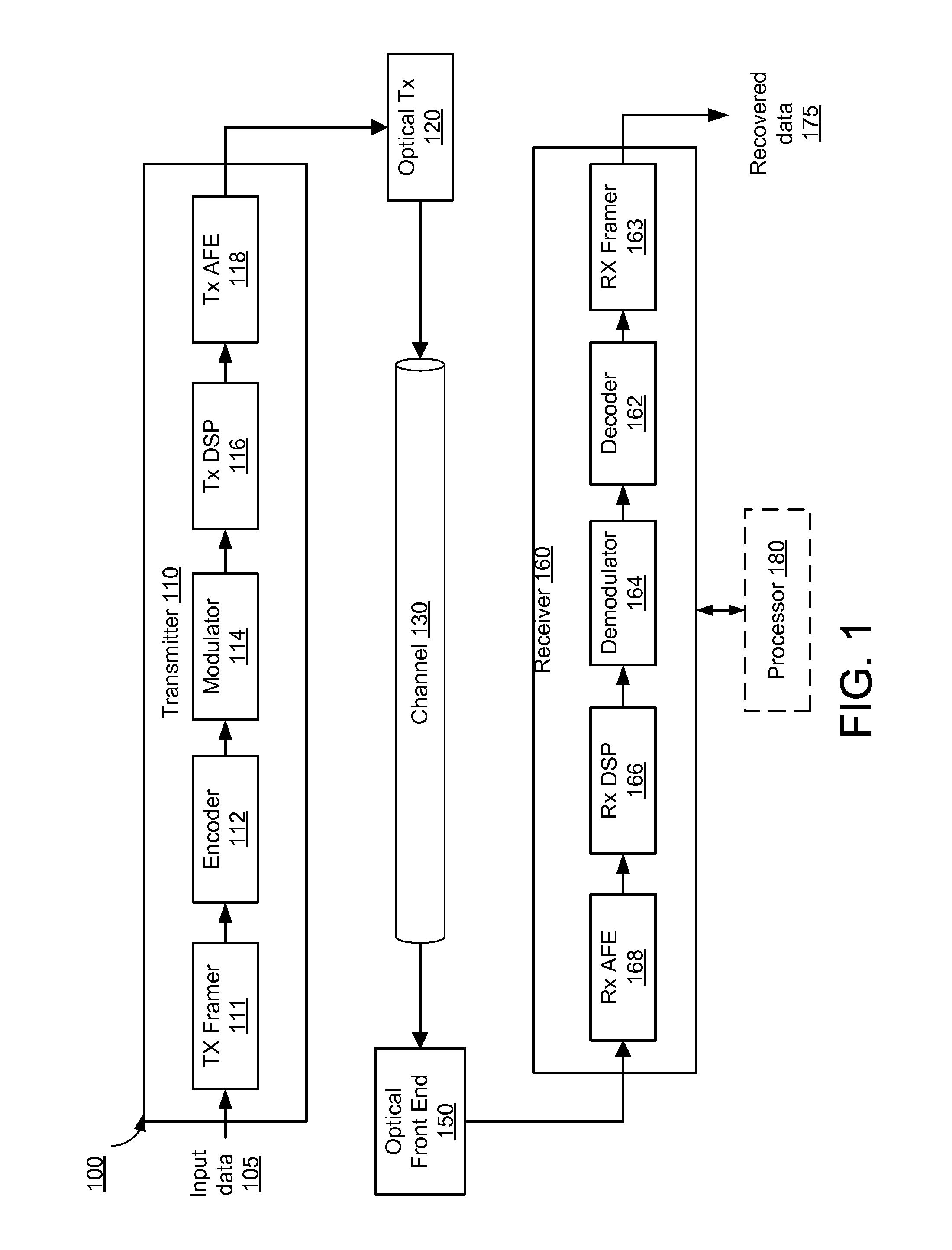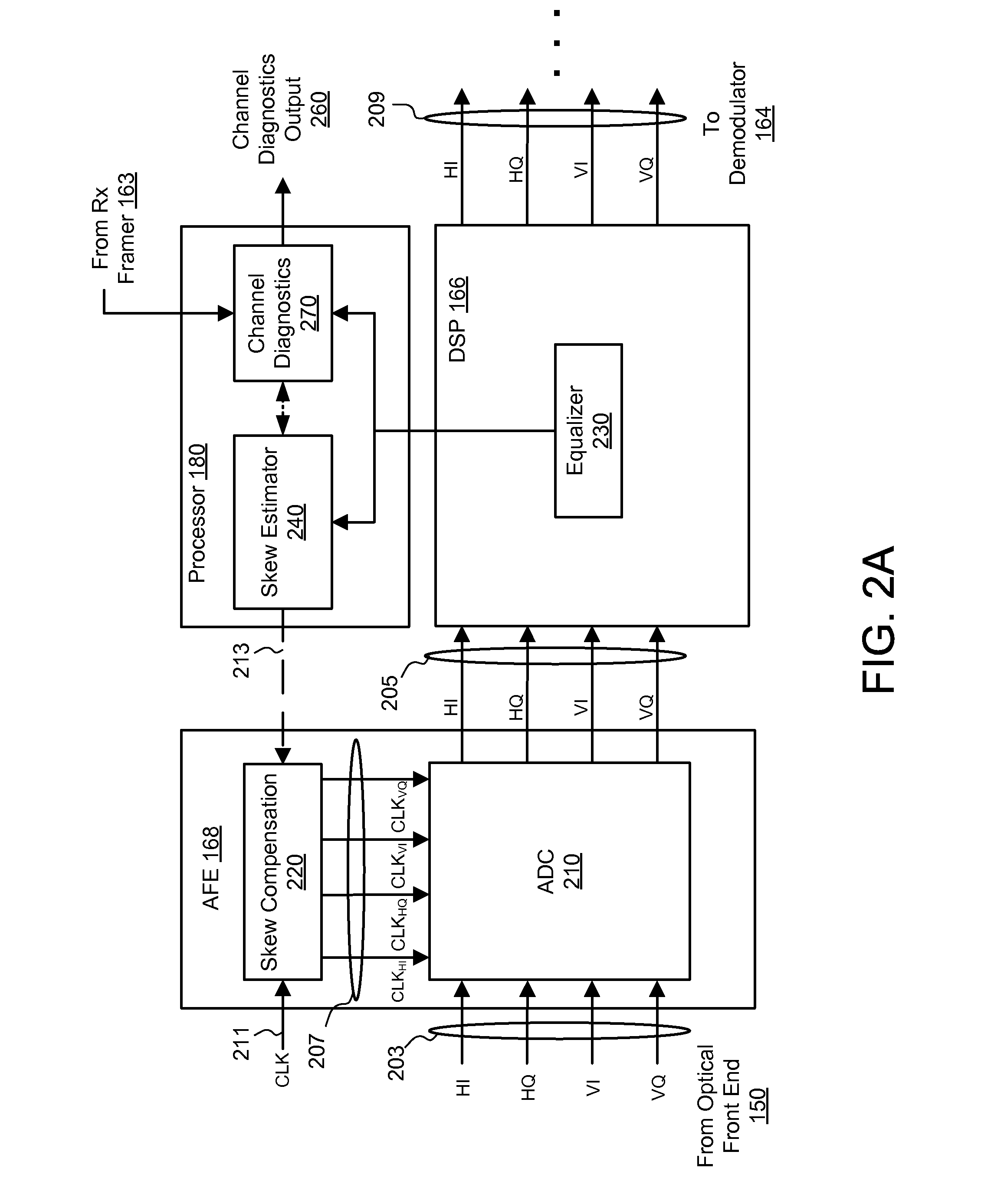Skew compensation based on equalizer coefficients
- Summary
- Abstract
- Description
- Claims
- Application Information
AI Technical Summary
Benefits of technology
Problems solved by technology
Method used
Image
Examples
Embodiment Construction
Overview
[0024]The disclosed embodiments generally relate to improving performance of coherent communication systems that employ electronic equalization of communication channels in the receiver. In a first aspect, a receiver performs an automatic skew calibration to compensate for skew between different input channels during a calibration stage of the receiver. The receiver skew is estimated by observing the coefficients of an adaptive equalizer, which adjusts the coefficients based on time-varying properties of the multi-channel input signal. The receiver compensates for the estimated skew by adjusting the phases of the sampling clocks for the different channels.
[0025]In a second aspect, the receiver performs channel diagnostics to extract channel information from the equalizer coefficients. The channel information can be used to automatically estimate differential group delay introduced by channel impairments during real-time operation. The differential group delay is accurately e...
PUM
 Login to View More
Login to View More Abstract
Description
Claims
Application Information
 Login to View More
Login to View More - R&D
- Intellectual Property
- Life Sciences
- Materials
- Tech Scout
- Unparalleled Data Quality
- Higher Quality Content
- 60% Fewer Hallucinations
Browse by: Latest US Patents, China's latest patents, Technical Efficacy Thesaurus, Application Domain, Technology Topic, Popular Technical Reports.
© 2025 PatSnap. All rights reserved.Legal|Privacy policy|Modern Slavery Act Transparency Statement|Sitemap|About US| Contact US: help@patsnap.com



